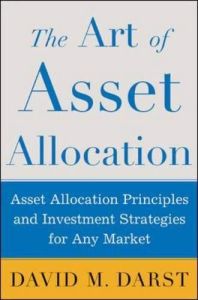Join getAbstract to access the summary!

Join getAbstract to access the summary!
David M. Darst
The Art of Asset Allocation
Asset Allocation Principles and Investment Strategies for Any Market
McGraw-Hill, 2003
What's inside?
To earn investing rewards and control risk (well, as much as possible), embark on a thoughtful asset allocation routine.
Recommendation
Decades of research by scholars and financial practitioners have generally supported the reasonable counsel "don’t put all your eggs in one basket." But it is one thing to advise investors to diversify, and another to show them how. Author David M. Darst outlines a systematic approach to parceling out your savings among different investment assets. There’s a science to asset allocation, though its principles are not immediately apparent. Darst treats these precepts with admirable thoroughness in a book that is, mostly, accessible to an educated layperson. But brew some strong coffee. Readers lacking a business or finance background may find the theoretical discussion difficult and tedious, particularly given the deliberate style. However this 2003 book follows one of the most dramatic periods in stock market history, the 1990s, when even sophisticated market watchers wondered if the sound financial principles cited here still applied. The ensuing bear market made it clear that the laws of risk and return had not yet been repealed. In this atmosphere, getAbstract.com welcomes this solid explanation of risk and return.
Summary
About the Author
David M. Darst is a Managing Director and Chief Investment Strategist in the individual investor area of Morgan Stanley. He also wrote The Complete Bond Book and The Handbook of the Bond and Money Markets.

















Comment on this summary